Meyer Lemon Tree Dying
Dan Charest
6 years ago
Featured Answer
Sort by:Oldest
Comments (47)
Alanna Migliacci
6 years agoDan Charest
6 years agoRelated Discussions
Meyer Lemon tree struggling/dying???
Comments (13)thanks guys. I think I may water it 2x a week, or like every 4 days. Since I ignored all the common wisdom of not planting right before summer, I think it may need more water, more often because its so young. I just visited my orange and grapefruit trees, and they're displaying similar symptoms, although not as bad yet and I planted them later. They're doing better, but probably because they get afternoon shade. I think my lemon is looking better than when I posted this already, so hopefully the deep deep soak helped. OH and I put Superthrive on it before Sunday! I also took of the worst of the burned/dead leaves I don't know if that' the right thing to do or not. I'd hate to kill it by over-watering it or ignore a problem that's there because I don't know what it is. Any other tips would be great! I'll be watching them closely...See MoreMeyer lemon tree dying!!
Comments (9)Hello, I have a 20 yr old lemon tree that seems to be dying. It used to have healthy dark green leaves and produce a lot of big beautiful fruit. Now there is half the amount of leaves there used to be, all pale yellow and shriveled up, and the lemons are the size of key limes. An arborist believed it was getting too much water, though it was getting the same amount it always had, and suggested we stop the sprinklers and pull up the bricks around it (which we did) to let the soil air out. A gardener thought it was protesting against dirt having been buried too far up its trunk, which we removed. Another gardener thought it wasn't getting enough water, but when he watered it, the leaves did not unfold. None of this has made a difference - in fact it's worse than ever - and there don't seem to be pests or mites. It looks more horrible with each passing month, and we have no idea what else to do! Any suggestions would be greatly appreciated! Thank you... Heather Collins...See MoreSick and dying Meyer Lemon Tree
Comments (2)gpgruver, citrus and clay soils don't mix...unless you work at it. In locations where such soils are the norm, citrus are usually planted VERY high, or raised beds are built. Drainage systems can certainly be constructed prior to planting, as houston mentions. Even a very small change of grade (you mentioned that his plant is down-hill) can result in a heck of a lot of extra water moving through the soil system. Many people add lots of extra soil amendments when planting. This can result in lots of problems, especially in clayey soils! It is one of the reasons why the practice of amending the planting hole and backfill hasn't been recommended for many years. I don't want anyone to think that all clay soil situations can cause problems for citrus. Not true. I have very heavy clay but it drains well. We plant directly into the clay, making sure that holes are dug in the shape of a wide basin. Plants should be seated so that the top of the root ball is higher than the surrounding soil. The backfill is the same clay that was dug out of the hole. If I lived in an area where I could grow citrus, I wouldn't hesitate for one second....See MorePlease help my Meyer Lemon Tree is Dying
Comments (2)Meyers don't like changes, so if you had it outdoors then moved it indoors, it will drop leaves. Also, those leaves look a bit mottled like spider mites could be a problem. Also, if you look at the plant sideways, it will drop leaves. Folks on citrus forum could probably help you, but they'll probably ask you to show the entire plant....See MoreUser
6 years agoDenise Becker
6 years agoDan Charest
6 years agonikthegreek
6 years agoDan Charest
6 years agolast modified: 6 years agomyermike_1micha
6 years agolast modified: 6 years agonikthegreek
6 years agolast modified: 6 years agomyermike_1micha
6 years agolast modified: 6 years agoDenise Becker
6 years agolast modified: 6 years agomyermike_1micha
6 years agolast modified: 6 years agoAlanna Migliacci
6 years agoDan Charest
6 years agomyermike_1micha
6 years agolast modified: 6 years agoAlanna Migliacci
6 years agouncle molewacker z9b Danville CA (E.SF Bay)
6 years agolast modified: 6 years agoHome
6 years agolast modified: 6 years agoVladimir (Zone 5b Massachusetts)
6 years agoHome
6 years agolast modified: 6 years agoVladimir (Zone 5b Massachusetts)
6 years agoDan Charest
6 years agoHome
6 years agolast modified: 6 years agoVladimir (Zone 5b Massachusetts)
6 years agouncle molewacker z9b Danville CA (E.SF Bay)
6 years agolast modified: 6 years agoHome
6 years agolast modified: 6 years agouncle molewacker z9b Danville CA (E.SF Bay)
6 years agoDan Charest
6 years agotropicofcancer (6b SW-PA)
6 years agolast modified: 6 years agoHome
6 years agolast modified: 6 years agoDenise Becker
6 years agoHome
6 years agoDenise Becker
6 years agotropicofcancer (6b SW-PA)
6 years agoHome
6 years agolast modified: 6 years agotropicofcancer (6b SW-PA)
6 years agomyermike_1micha
6 years agoDenise Becker
6 years agolast modified: 6 years agoDan Charest
6 years agoVladimir (Zone 5b Massachusetts)
6 years agotropicofcancer (6b SW-PA)
6 years agoVladimir (Zone 5b Massachusetts)
6 years agotropicofcancer (6b SW-PA)
6 years agoLemon Lime Orange Zone 6a
5 years agomyermike_1micha
5 years ago
Related Stories

GARDENING GUIDESHow to Keep Your Citrus Trees Well Fed and Healthy
Ripe for some citrus fertilizer know-how? This mini guide will help your lemon, orange and grapefruit trees flourish
Full Story
FARM YOUR YARDIf You Have Room for Only One Fruit Tree ...
Juice up a small garden with one of these easier-care or worth-the-effort fruit trees for a mild climate
Full Story
EDIBLE GARDENSHow to Grow 10 Favorite Fruit Trees at Home
Plant a mini orchard in fall, winter or early spring to enjoy fresh-off-the-tree fruit the following year
Full Story
EDIBLE GARDENSHow to Add an Apple Tree to Your Edible Garden
Readily available, beautiful and fragrant, apple trees offer four-season interest along with crisp, juicy fruit
Full Story
GARDENING GUIDES5 Best-Behaved Trees to Grace a Patio
Big enough for shade but small enough for easy care, these amiable trees mind their manners in a modest outdoor space
Full Story
GARDENING GUIDESSpring Citrus Care Reaps Months of Sweet Rewards
Learn how to tend citrus trees in spring and ways to preserve their delicious fruit
Full Story
EDIBLE GARDENSWhy Grow Quince? For Beauty, Fragrance and Old-Time Flavor
Delightfully perfumed fruit and lovely spring blossoms make this apple and pear cousin worth a spot in the garden
Full Story
EDIBLE GARDENSHow to Grow Your Own Peaches and Nectarines
Make gardening a little sweeter with these juicy fruits, which you can eat after plucking or preserve for later
Full Story
SPRING GARDENINGTop 10 Scented Plants for Your Garden
A palette of perfumed plants can transform even the smallest of gardens into a sensory delight
Full Story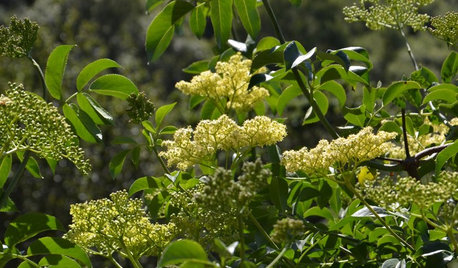
GARDENING GUIDESGreat Design Plant: Sambucus Nigra Caerulea for the Birds
Blue elderberry is a favorite of birds and other wildlife in its native California
Full Story




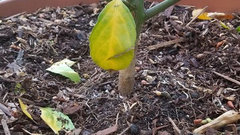

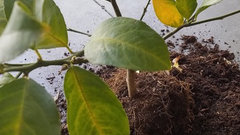
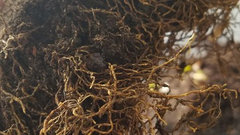
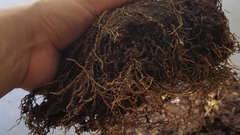
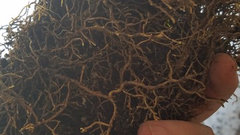




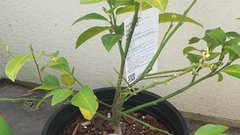
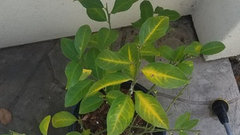

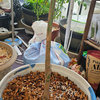
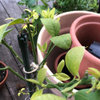
johnmerr